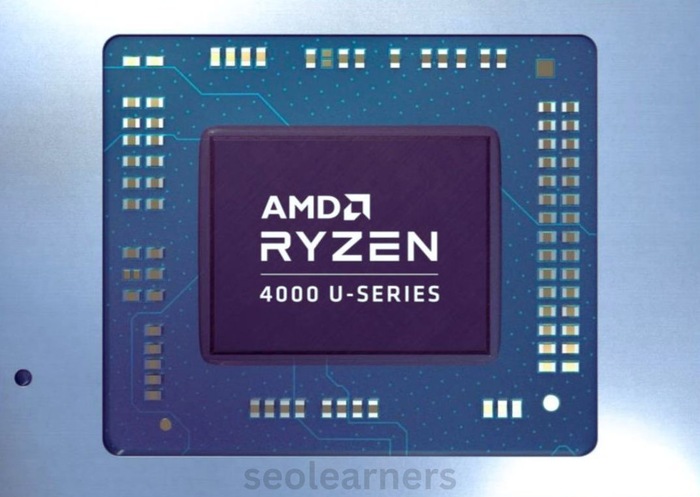AMD Radeon RX Vega 6

AMD offers its Radeon RX Vega 6 as a graphics processing unit (GPU) for laptop computers. The most current AMDs (accelerated processing units, check out CPU) based on the Ryzen 3 architecture employ this kind of. The GPU has the highest clock speed of 1100 MHz. It is built using the Vega architecture that constitutes the fifth version of GCN.
It also has six CPUs equal to 384 shaders instead of 704. The overall functionality of the gadget, which, at the time it was released, was between 12 and 25W, can be influenced by various variables, such as how fast the CPU is, the cooling method, and the memory settings.
The graphics processing unit (GPU) is expected to benefit by having fast dual-channel DDR4-2400 RAM instead of single-channel DDR4-2133 RAM. This is possible. This is an upgrade to previous versions of DirectX 12 Feature Level 12_1 support provided through the Polaris generation currently offered via the Vega architecture.
For further information, look up our extensive review of Raven Ridge and the structure that is located in Raven Ridge. We are currently anticipating performance comparable to that of Intel UHD Graphics 630. This implies that only games with the highest demands launched in 2016 can perform correctly using low-detail settings.
Specifications: AMD Radeon RX Vega 6
| Graphics card | AMD Radeon RX Vega 6 |
| Market (main) | Laptop |
| Release date | Q1 2020 |
| GPU name | Raven |
| Architecture | GCN 5.0 |
| Generation | Vega Raven Ridge |
| Lithography | 7 nm |
| Transistors | 9,800,000,000 |
| Bus interface | IGP |
| GPU base clock | 400 MHz |
| GPU boost clock | 1,500 MHz |
| TDP | 15 W |
| Cores (compute units, SM, SMX) | 6 |
| Shading units | 384 |
| TMUs | 24 |
| ROPs | 8 |
| Pixel fillrate | 12.0 GPixel/s |
| Texture fillrate | 36.0 GTexel/s |
| Performance FP16 (half) | 2.3 TFLOPS |
| Performance FP32 (float) | 1.2 TFLOPS |
| Performance FP64 (double) | 72 GFLOPS |
Features of AMD Radeon RX Vega 6

Performance
Many aspects influence how the Vega6 Graphics function, including those that affect their TDP (12-25 Watts) and the Clock Speed, cooling solution, and configuration of RAM settings. Many aspects influence how it is that the Vega6 Graphics can perform. Together with a Graphics Processing Unit (GPU), the ability to use fast dual-channel RAM is a huge advantage.
This is why Renoir APUs are in a position to make use of LPDDR4x capacities for memory. The latest Vega GPUs utilize the same technology that their predecessors did, but the 7nm process provides the performance to be significantly improved.
The speed of processing graphics on the latest AMD Radeon RX Vega 6 (Ryzen 4000/5000 series) is superior by 20 percent compared to what was available in the earlier-generation Vega 8 (2000/3000 series). Its performance Vega 6 is comparable to that of AMD’s Mx150 and Mx330. It surpasses the performance of the Mx230.
Technical specs
The number of shaders used, the GPU base clock, the manufacturing method, the speed of texturing, and the speed of calculation are the main elements highlighted in a few of the aspects available on the AMD Radeon RX Vega 6. You can estimate how well the AMD Radeon Vega 6 is from these figures.
Memory
The memory of the Radeon Vega 6 is measured by its dimensions, the type of bus speed, and consequent bandwidth. Ensure that graphics processing units (GPUs) within CPUs don’t have their memory. Instead, they depend on a small portion of the system’s RAM.
API support
APIs that work with APIs for AMD Radeon Vega 6 graphics cards are available in various variants.
Benchmark performance
Radeon RX Vega’s efficiency was evaluated against a fake benchmark. The score could range between zero and 100.
Average FPS across all PC games
This is a listing of the frame count used by the vast majority of the most well-known games currently played at their original resolutions HD Quality.
Other Related Devices
Summary
The Radeon RX Vega 6 was revealed to the general public via AMD on January the 7th January 7th, 2020. Its Vega computing architecture and fabrication method with a thickness of 14 nanometers is used to create the graphics card designed for the laptop. The office space is the primary target market. Just 15 watts are being used through the unit. According to AMD, its low energy consumption for graphics cards is due to the use of 14nm technology, and its numerous storage capacities allow it to function in small and light notebooks.
 Global Elix
Global Elix 